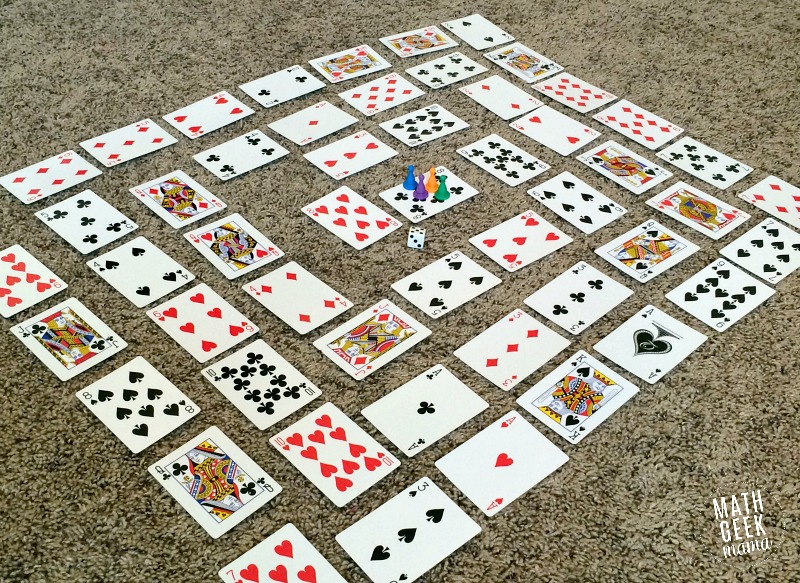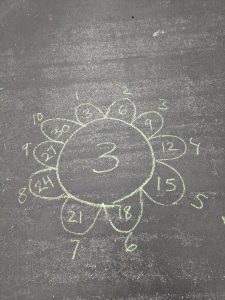
- Deck of playing cards
- Game pieces for each player
- 1 or 2 dice
The object of this game is to be the first to travel from start to finish.
- Start with a complete deck of cards, as well as 1-2 dice and game pieces for each player. Ace = 1, Jack = 11, Queen = 12 King = 0
- Build a spiral like the picture below to create the game board.
- Each player then places their game piece at start (the center of the spiral).
- To start, the first player rolls a die and moves that number of cards on the game board.
- They must then multiply, subtract, or add the number on their die with the value of the card they landed on. If they solve it correctly, they stay there, otherwise they go back to their previous position.
- Players then take turns rolling and moving around the game board.
- If a player lands on a card with another player on it, they “bump” that player back to start.
- If a player lands on a “double,” meaning the number on their die and the value of their card is the same, they get to go again.
- The first player to land exactly on the last card and correctly solve the problem wins!

